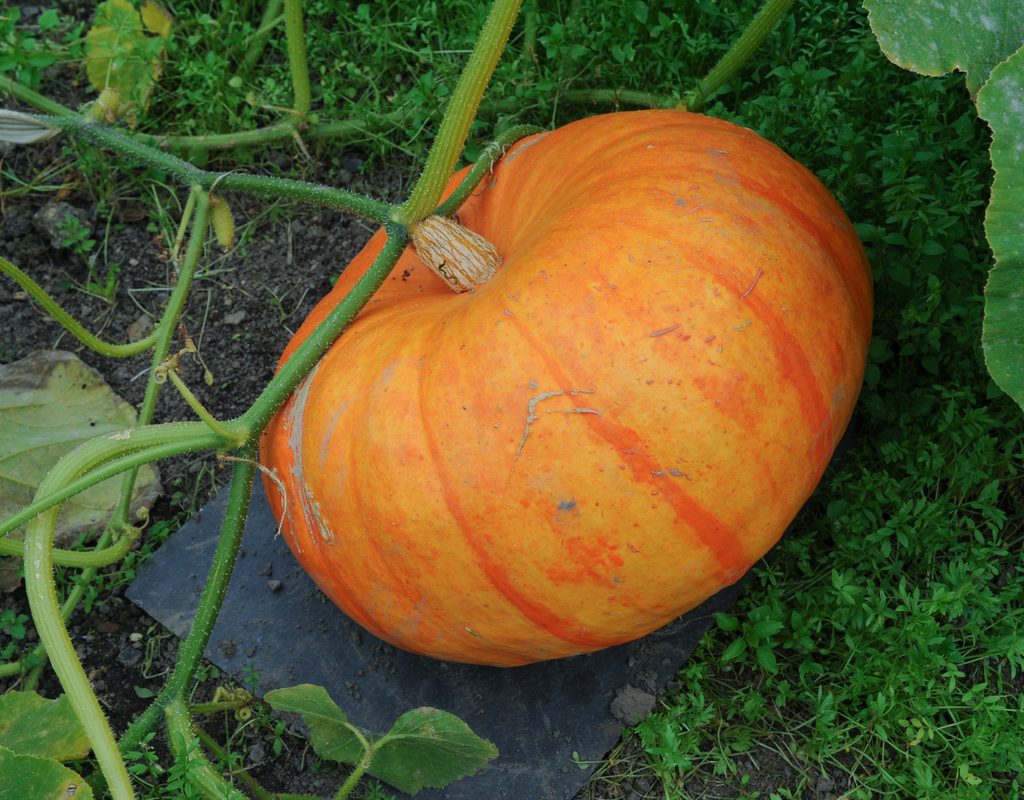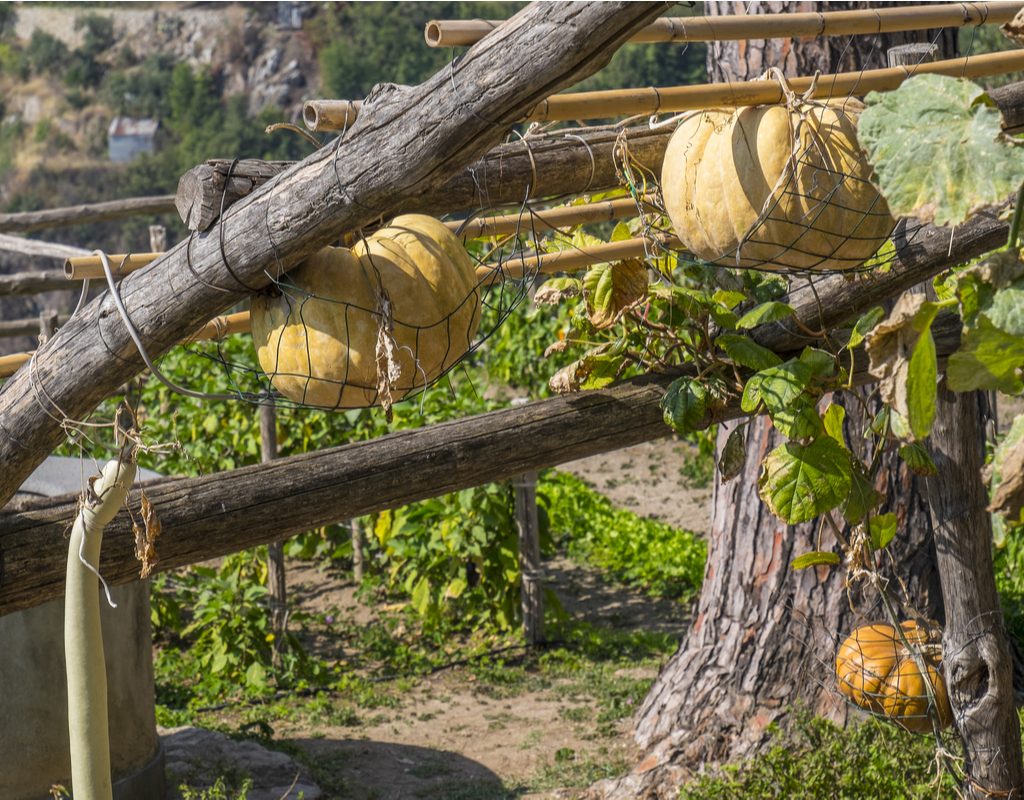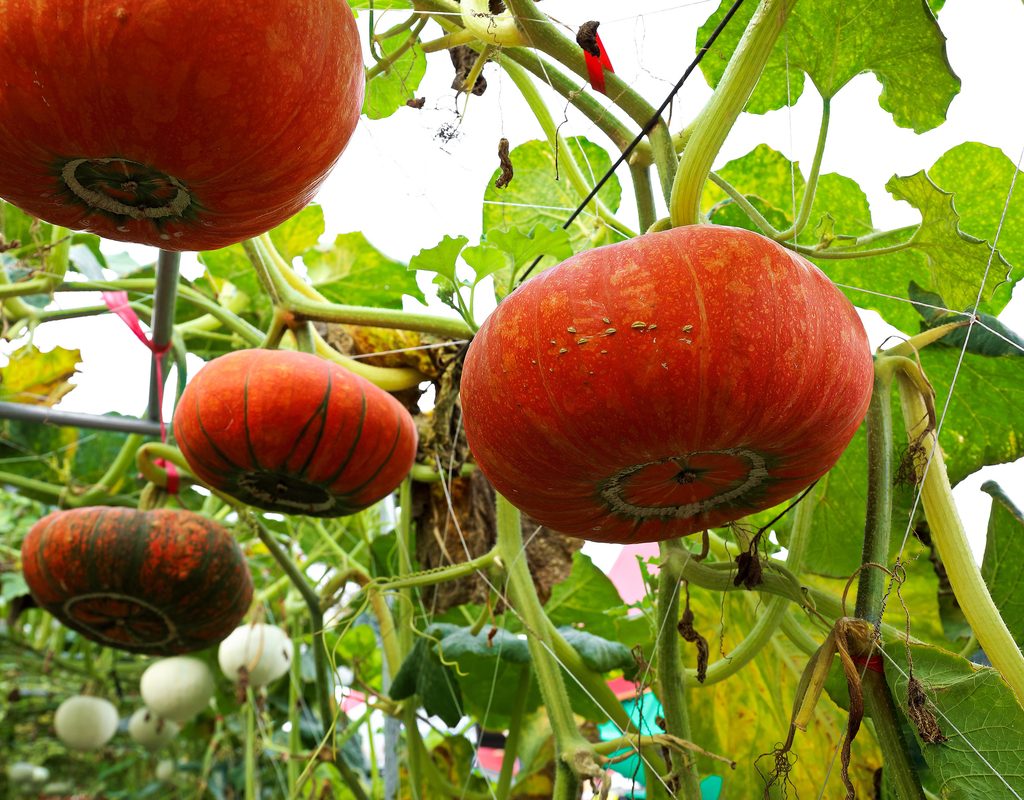Pumpkins are colorful winter squash that can be fun to grow in the garden. The large seeds are easy to harvest and prepare from last year’s jack-o-lantern. Or, there is a surprisingly diverse variety of pumpkin seeds to grow fruits of different sizes, shapes, and colors. All of which are used ornamentally for their classic autumn appeal, and many are delicious in recipes like pies, curries, soups, breads, and more. If you’re looking for a new garden crop, pumpkins may be a good idea.

Is pumpkin a fruit or vegetable?
Before diving into the details of growing backyard pumpkins, let’s clear the air. As with some other edibles, there is a popular debate over what type of food pumpkins are. The pumpkin itself is a fruit, botanically speaking. A fruit is a seed-bearing structure that develops from the ovary of a flowering plant. A vegetable is any other part of the plant. Regardless of the recipes in which it is used, pumpkin is not a vegetable, it is a fruit.
Turn this year’s jack-o-lantern into next year’s pumpkin pie
It’s easy to save seeds from a fresh pumpkin, all you need is a colander, paper towels, and an envelope or jar to store the seeds. After emptying the seeds and membrane from inside the fresh pumpkin, place all of the material into a colander and move it to a sink. While running cold water over the colander, pick out the biggest seeds and place them on a dry paper towel. Save about three times as many seeds as the number of plants you’d like to grow. Let the saved seeds dry out in a cool, dry area for a week to 10 days. Then store them in a jar or envelope until planting time.
Halloween pumpkins should be planted in June
It takes between 90 and 110 days to grow pumpkins. Count back that many days from the average first fall frost date in your area to find the latest possible planting date. Hedge against an early frost by backing a week or two earlier. In areas with short growing seasons, plant pumpkin seeds in four-inch containers indoors up to a month before transplanting them into the garden. Plant pumpkin seeds or seedlings in the garden after all danger of frost is past, when the soil has warmed.

Pumpkin plants need plenty of space
Sprawling pumpkin vines can grow up to 20 feet long. In raised beds it’s a good idea to plant pumpkins near the outer edge where the vines can be trained to run away and the rest of the bed will be left for other plants. Container gardeners should use a 20 or 25 gallon container for pumpkin plants. To maximize the use of space, pumpkin vines are easy to train onto a stout trellis. Where space saving is important, consider growing smaller varieties like pie pumpkins that have a great flavor and color but only grow to about the size of a medium cantaloupe.
Pumpkins have a few natural pests
The best way to ensure healthy growth is to give pumpkins full sunlight, plenty of space to ramble, and never water them overhead. In hot climates, some afternoon shade can reduce heat stress. Several plant diseases can become problematic, especially in overcrowded gardens with little air circulation where foliage remains wet. Watch for brown spots or white patches on the leaves, or a white powdery film growing on the leaf surface. If these symptoms appear, reach out to your local Cooperative Extension Service for assistance with diagnosis and fungicide or other treatment recommendations. Aphids, beetles, and caterpillars are the main bug pests of pumpkins. Pick them off by hand when numbers are low, or blast them with a strong water jet.

Pumpkins are ripe when color has developed and the flesh is firm
The first stage of pumpkin ripeness is full color development. Orange pumpkins should be deeply orange, white will be completely white, similarly fruits of other colors will take on the fullness of their expected colors. Around the expected harvest date, after the color has developed, use your fingernail to press firmly into the flesh. A ripe pumpkin will have tough outer skin that resists puncture. Finally, give it a thump with your thumb. If it has a hollow sound, it’s ready to harvest. Use garden pruners or a sharp knife to cut the stem away from the plant.
Pumpkins last in storage up to three months if they are kept between 50° and 55° F. Once cut, as in a jack-o-lantern, they quickly deteriorate within two weeks. Whether you intend to use them for food or ornamental purposes, pumpkins are fun to grow and provide a splash of late season color that any gardener will enjoy.


